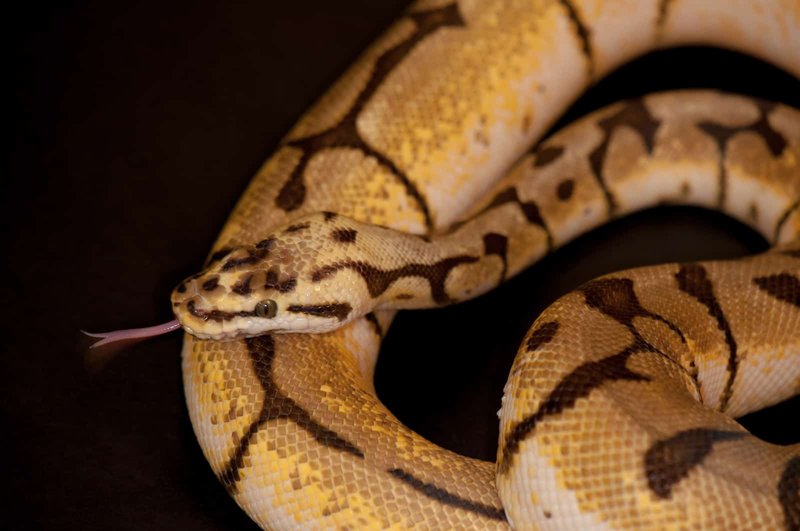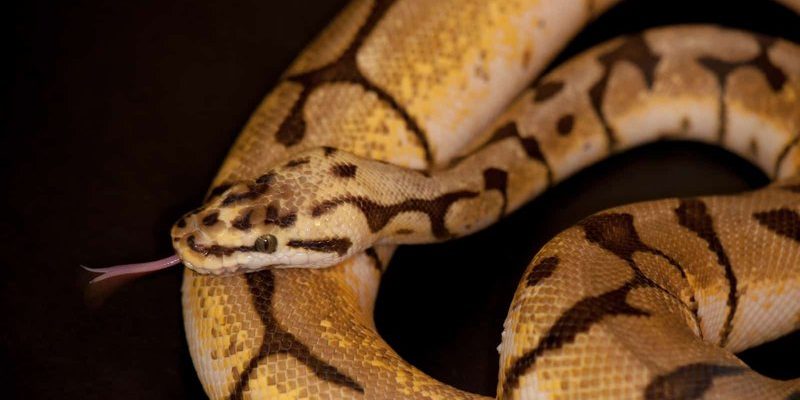
Just like people, snakes have their own personalities and quirks. For a ball python, curling up, hissing, and hiding are normal behaviors that speak volumes about their mood, comfort level, and health. This article will break down what each behavior signifies, exploring how to interpret your ball python’s actions. So grab a cup of coffee, and let’s dive into the fascinating world of ball python behavior!
Why Do Ball Pythons Curl Up?
Curling is a classic behavior for ball pythons, and it can mean a few things. Imagine yourself wrapped snugly in a blanket on a chilly day—you’re probably cold or just looking for comfort. Similarly, when a ball python curls up, it often seeks warmth and security. This is especially true in cooler temperatures, as these snakes thrive in warmer environments.
When they curl into a tight ball, it’s not just about warmth. This posture is also a natural defense mechanism. In the wild, curling helps them protect their vital organs from predators. So, if your ball python is in a tight ball, don’t panic; they might just be feeling a bit shy, or they’re catching some heat.
Another reason they may curl up is due to stress or discomfort. If you notice your snake curling up frequently after handling or during tank cleaning, it may feel overwhelmed. It’s essential to respect their space and give them time to adjust.
Understanding the Hissing Behavior
If your ball python hisses at you, it can sound alarming at first, but here’s the thing: it’s their way of saying “back off!” Hissing is primarily a warning sign, much like how we might raise our voices when we’re annoyed. It’s a defensive behavior that signals fear or discomfort.
You might be wondering when this behavior surfaces more often. Hissing usually occurs during handling or when they feel threatened—like if you’re trying to grab them suddenly. When this happens, it’s best to take a step back. Give your python some space and let them calm down before trying again.
It’s worth noting that not all hissing is negative. Sometimes, it can be a sign of excitement, especially if it happens when they sense food. So, while hissing can often mean they’re stressed, learning the context can help you understand what your snake is trying to communicate.
The Need for Hiding: Why It Matters
Ball pythons, like many snakes, have a natural instinct to hide. In the wild, they seek out crevices or leaf litter for protection. Think of this as their form of “me time.” When your ball python finds a cozy spot in their hide, it’s their way of feeling safe and secure.
You might notice your snake spending a lot of time in their hiding spot. This is normal behavior, especially during the day when they prefer being out of sight. It’s essential to ensure their enclosure has a proper hiding spot where they can retreat whenever they need—like a small cave or hide box.
However, if your snake seems overly obsessed with hiding or is avoiding food and handling, it could be a sign of stress or health issues. Make sure their environment is comfortable, with the right humidity and temperature. If you’re unsure, consulting with a veterinarian who specializes in reptiles can provide insight.
Reading Body Language Beyond Curling, Hissing, and Hiding
Ball pythons communicate a lot through body language. Understanding this non-verbal communication can help you respond better to your pet’s needs. For example, when a ball python stretches out, it can indicate they’re comfortable and feel safe in their environment.
Conversely, if you notice them puffing up, it might signal they’re feeling threatened or trying to appear larger than they are. Think of it as a defensive stance. And when they flick their tongue, they’re just gathering information about their surroundings. Snakes explore the world through their tongues, which helps them detect scents and pheromones.
Each of these behaviors tells you something about how your python is feeling. Observing these subtle cues will strengthen your bond and help you provide a better living environment for them.
Creating a Stress-Free Environment for Your Ball Python
Understanding your ball python’s behavior is vital, but creating a stress-free environment is just as important. First and foremost, make sure their habitat mimics their natural surroundings. This means having the correct temperature gradient, humidity levels, and hiding spots.
A proper tank setup might include:
- A warm side (around 80-90°F) for basking
- A cooler side (around 75-80°F) for them to retreat if they get too warm.
- Hiding spots to offer security, such as caves or logs.
- Fresh water and appropriate substrate for burrowing.
Regular cleaning and maintenance of their tank also matter. Snakes can be sensitive to changes in their environment, so keeping everything clean and stable can reduce stress.
Finally, handling your ball python with care and respecting their moods will help strengthen your bond. If you sense they’re feeling a bit off, it’s best to give them space rather than force interaction.
The behaviors of ball pythons—curling, hissing, and hiding—are essential parts of their personality. By understanding these signals, you can build a strong bond with your pet and ensure they feel secure in their home. Just like any relationship, it takes time to learn about each other.
You might find that the more you observe, the clearer their needs and feelings become. Remember that patience goes a long way in building trust. So, embrace the quirks of your ball python, and enjoy the journey of getting to know your unique companion!

